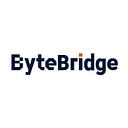Chatbot — One of the Most Popular Applications in the NLP Field
Better Data for Smarter Chatbots
Chatbot Introduction
Chatbot, a computer program that interacts with users through natural language processing (NLP), has become extraordinarily popular in recent years. Various types of chatbots are increasingly dedicated in order to facilitate human-computer interactions through messaging applications, phones, websites, or mobile apps. In fact, a chatbot is one of the typical examples of AI systems in NLP applications.
The first chat robot appeared in the 1960s. After decades of development, NLP has become the foundation for creating chatbots. Although such systems are not perfect, they can handle some standard tasks easily. For instance, they can run on many distributions, including the Internet, Apps, and Message platforms.
Not-so-intelligent Chatbots
According to a survey by Usabilla in 2019, 54% of respondents said they would prefer a chatbot to a human customer support representative if it could save them 10 minutes. Moreover, 59% of consumers in a PWC survey mentioned they want to have more humanized experiences with chatbots. Although customers have positive feelings toward AI solutions for efficiency, many not-so-intelligent chatbots that are not smart enough to engage in fundamental conversations are seen in several industries.
Most chatbots that we see today are supported by machine learning. They incorporate the ability to understand human language and get themselves trained.
Here comes the question, how does the chatbot get trained?
The answer is training datasets.
The dataset can be considered as a set of examples. The chatbot’s algorithms extract and save patterns with each data input. In this way, a chatbot uses training data to understand users’ behavior and presents the most applicable conversation for a personalized experience.
If not properly considered and developed, chatbots may contain massive potential failures. For example, when a customer starts a conversation with the word “howdy”, if the chatbot only has the greeting words “hello”, “hi” programmed in the training dataset, it doesn’t have a clue about how to respond.
Better Data for Smarter Chatbots
The quality of training data is key
Ben Virdee-Chapman, head of product at Kairos.com, once said that “the quality of the training data that allows algorithms to learn is key.” Preparing the training dataset for chatbots is not easy. For a customer service chatbot, a dataset that contains a massive amount of discussion text between customers and human-based customer support needs to be collected, cleaned, and labeled with accuracy. The no bias sample makes the AI-enabled chatbot more understandable so as to better communication.
Conversational AI agents such as Alexa and Siri are built with large-scale manually annotated data. However, large-scale manual annotation is usually expensive and time-consuming. Thus, abundant and useful datasets are valuable assets for chatbot development.
Customer’s Pain Point
However, people always find themselves struggling to make a trade-off on the quality of the training data, and the amount of time and cost required.
Traditional data providers collect text data or transcribe audio data offline from all available resources, which in turn takes much time. On the other hand, data quality is often not guaranteed. Thus, obtaining task-oriented text datasets and getting them annotated in a massive amount remains a bottleneck for developers.
Chatbots are evolving and becoming increasingly sophisticated in an endeavor to mimic how people talk. Good chatbot applications can not only enhance customer experience but also improve operational efficiency. To be successful, obtaining crucial datasets is indispensable in training and optimizing the chatbot system.
NLP
We provide different types of NLP in E-commerce, Retail, Search engines, Social Media, etc. Our service includes Voice Classification, Sentiment Analysis, Text Recognition and Text Classification(Chatbot Relevance).
Partnered with over 30 different language-speaking communities across the globe, ByteBridge now provides data collection and text annotation services covering languages such as English, Chinese, Spanish, Korean, Bengali, Vietnamese, Indonesian, Turkish, Arabic, Russian and more.
Moreover, a collaboration of the human-work force and AI algorithms ensure a 50% lower price compared to the conventional market.
End
Outsource your data labeling tasks to ByteBridge, you can get the high-quality ML training datasets cheaper and faster!
- Free Trial Without Credit Card: you can get your sample result in a fast turnaround, check the output, and give feedback directly to our project manager.
- 100% Human Validated
- Transparent & Standard Pricing: clear pricing is available(labor cost included)
Why not have a try?
Relevant Articles:
1Main Applications of Natural Language Processing(NLP) — 1
2 Main Applications in Natural Language Processing Field(NLP) — 2
3 Main Applications in Natural Language Processing Field(NLP) — 3
